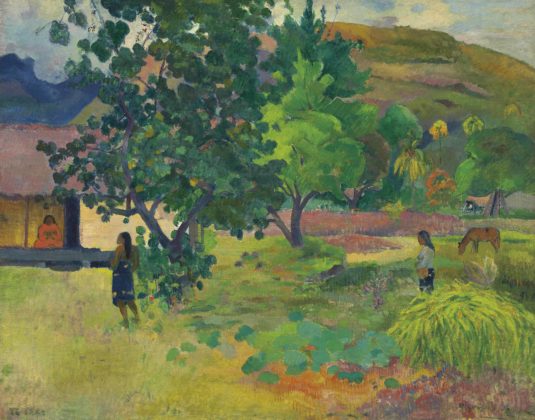
Te Fare (La maison) Paul Gaugin via Christies©
Envision Europe on the brink of war in 1938: burgeoning turmoil, uncertainty and apprehension in economic circumstances dire for all except the exceedingly wealthy. Despite many colonial holdings at the time, France is experiencing economic instability, social upheaval and a Depression similar to the United States. She reflects fondly upon halcyon days – torrid protectorates brimming with luxurious natural resources: exotic fruits and flora, sultry equatorial climes, servants to cater to one’s every whim. Nostalgia as monarch. In this political climate Henri Alméras composes creature comfort, his extraordinary pineapple chypre Jean Patou Colony. Patou Colony endeavored to evoke an atmosphere of epicurean leisure, an olfactory recherche du temps perdu.

Jean Patou via Wikipedia©
In 1938 classical French perfumery was in its heyday. Lucien Lelong, Fabergé, Prince Matchabelli, Schiaparelli, Helena Rubenstein, Knize, Harriet Hubbard Ayer and Elizabeth Arden were creating marvelous fragrances; in this same year Shulton released Old Spice.Colony was an altogether different creature despite its classification as a fruity chypre. Splendid fruity chypres have been adored for years – but pineapple-predominant ones are scarce.
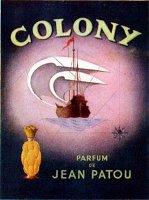
Patou Colony vintage ad
I’d like to suggest a divergent approach towards appraising Jean Patou Colony: contemplating it as an ingenious tapestry of the French global footprint in 1938. The more deeply I dove into each aromatic material, its origin, history and geography – it became apparent how entwined they all might be. If that is indeed true, how much more remarkable this perfume is as a result. That would render Colony a deliberate integration of numerous fragrant components found wherever an adventurous French citizen might place his foot…
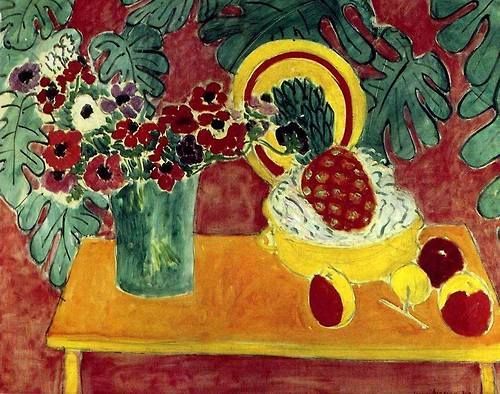
Henri Matisse French, Pineapple and Anemones, 1940
Master perfumer Henri Alméras took a leap of faith employing polarizing ripe-to-overripe louche pineapple escorted by another jewel of the French territories: ylang-ylang from Nosy-Be off the Madagascar coast. The sheer decadence of a buttery, bananalike floral mingling with honeyed juicy nearly-past-its prime pineapple is a coup. Comrades in crime, the pair of them – they are thoroughly capable of summoning languid détentes in situ, where one’s native tongue is still spoken. Carnation furnishes peppery, clove-y facets which echo the riches of the Spice Islands. Iris frequently goes hand-in-hand with carnation in many fragrances of that era, often leathery ones (Knize Ten, Tabac Blond).
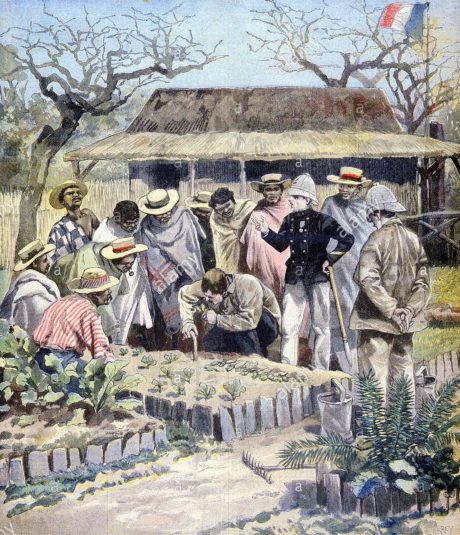
1897 French colony of Madagascar (East Africa Indian Ocean). Administrators instruct natives in farming cultivation techniques stock photo©
There are undeniable links to French East Africa of yore, right down to Somalian opoponax (sweet myrrh) and vetiver from Réunion. Further French presence and trade routes are referenced via sandalwood – South India and Vanuatu produced excellent quality. Louis Vuitton continues to have a foothold in Pondicherry, which produces luxury leather goods. Castoreum (that lovely animalic substance which fleshes out leather) may be sourced in French Canada as well as Europe. Costus root (a Himalayan native) smells faintly violet-tinged with a fatty, woody warmth, as it fixes and amplifies the carnal aspects of Colony with its slightly unwashed scalp note. Oakmoss is glorious, readily accessible in central Europe and parts of France; no old school chypre exists without its inky rich forest floor tones. Colony’s undercurrents insinuate themselves softly, allying with musks which accentuate its fleshly nature: somewhat sweet, sweaty, post-coital. Over time, hours into the drydown – there appears a faintly smoky tenor, very sophisticated. It’s pure genius, suave and seamless. What is exceptional is the perfume’s sense of movement, the journey on which original Patou Colony takes you.
Say what you will, you will either love it or hate it – but it’s never boring. Colony’s singularity has claimed its rightful place among my favorites.
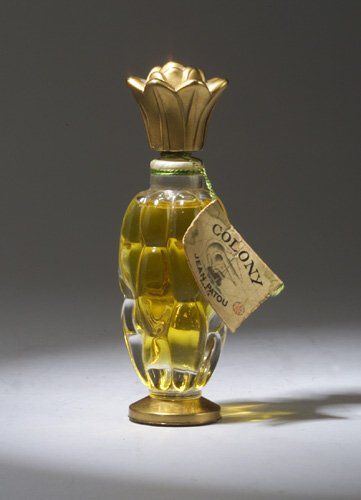
Colony for Jean Patou, circa 1937 via tumblr
Jean Patou Colony’s quirky Baccarat parfum flacon has caused quite a stir: it is a pineapple (brought back from the tropics, pineapples were frequently displayed as a symbol of hospitality), but others see a similarity to the form of a hand grenade. The advertising has come under scrutiny as well in the current day eye; a shadowy image of dark, intense staring eyes reminds us of indentured servitude, forced labor, slavery – makes us uncomfortable, perhaps. It’s mysterious and more than a bit menacing. The ship with billowing sails on its label, jute packaging, the gilded crown atop a pineapple flacon remind us that the French colonial empire was second only to Britain’s in 1938. (I purchased that same flacon decades ago. It was so fragile that some of the crystal shattered in my hand; I was able to salvage most of it, but that spoke to its probable age. The jus remained in pristine condition.)
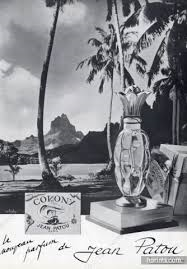
Jean Patou 1937 Colony ad, Photo Orlinsky
I ask you this: do we judge Jean Patou Colony based upon our own prejudices, norms, opinions removed from historical context? Upon what we deem as politically correct today? Dismiss beauty entirely because it doesn’t resonate with our current climate? There exist innumerable instances where we admire art forms while deploring the artist’s beliefs/behavior, the political environment. It may be too facile to relegate Jean Patou Colony to Coventry if we cannot appreciate it on its own merits.
Perhaps we only know in part and are seeing through a glass, darkly.
~ Ida Meister, Senior Editor
